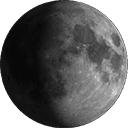Photometric variability of the Be star CoRoT-ID 102761769
Author(s): Emilio, M.; Andrade, L.; Janot-Pacheco, E.; et al.
Source: ASTRONOMY & ASTROPHYSICS Volume: 522 Article Number: A43 DOI: 10.1051/0004-6361/201014081 Published: NOV 2010
Context. Classical Be stars are rapid rotators of spectral type late O to early A and luminosity class V-III, which exhibit Balmer emission lines and often a near infrared excess originating in an equatorially concentrated circumstellar envelope, both produced by sporadic mass ejection episodes. The causes of the abnormal mass loss (the so-called Be phenomenon) are as yet unknown.
Aims. For the first time, we can now study in detail Be stars outside the Earth’s atmosphere with sufficient temporal resolution. We investigate the variability of the Be Star CoRoT-ID 102761769 observed with the CoRoT satellite in the exoplanet field during the initial run.
Methods. One low-resolution spectrum of the star was obtained with the INT telescope at the Observatorio del Roque de los Muchachos. A time series analysis was performed using both cleanest and singular spectrum analysis algorithms to the CoRoT light curve. To identify the pulsation modes of the observed frequencies, we computed a set of models representative of CoRoT-ID 102761769 by varying its main physical parameters inside the uncertainties discussed.
Results. We found two close frequencies related to the star. They are 2.465 c d(-1) (28.5 mu Hz) and 2.441 c d(-1) (28.2 mu Hz). The precision to which those frequencies were found is 0.018 c d(-1) (0.2 mu Hz). The projected stellar rotation was estimated to be 120 km s(-1) from the Fourier transform of spectral lines. If CoRoT-ID 102761769 is a typical Galactic Be star it rotates near the critical velocity. The critical rotation frequency of a typical B5-6 star is about 3.5 c d(-1) (40.5 mu Hz), which implies that the above frequencies are really caused by stellar pulsations rather than star’s rotation.






